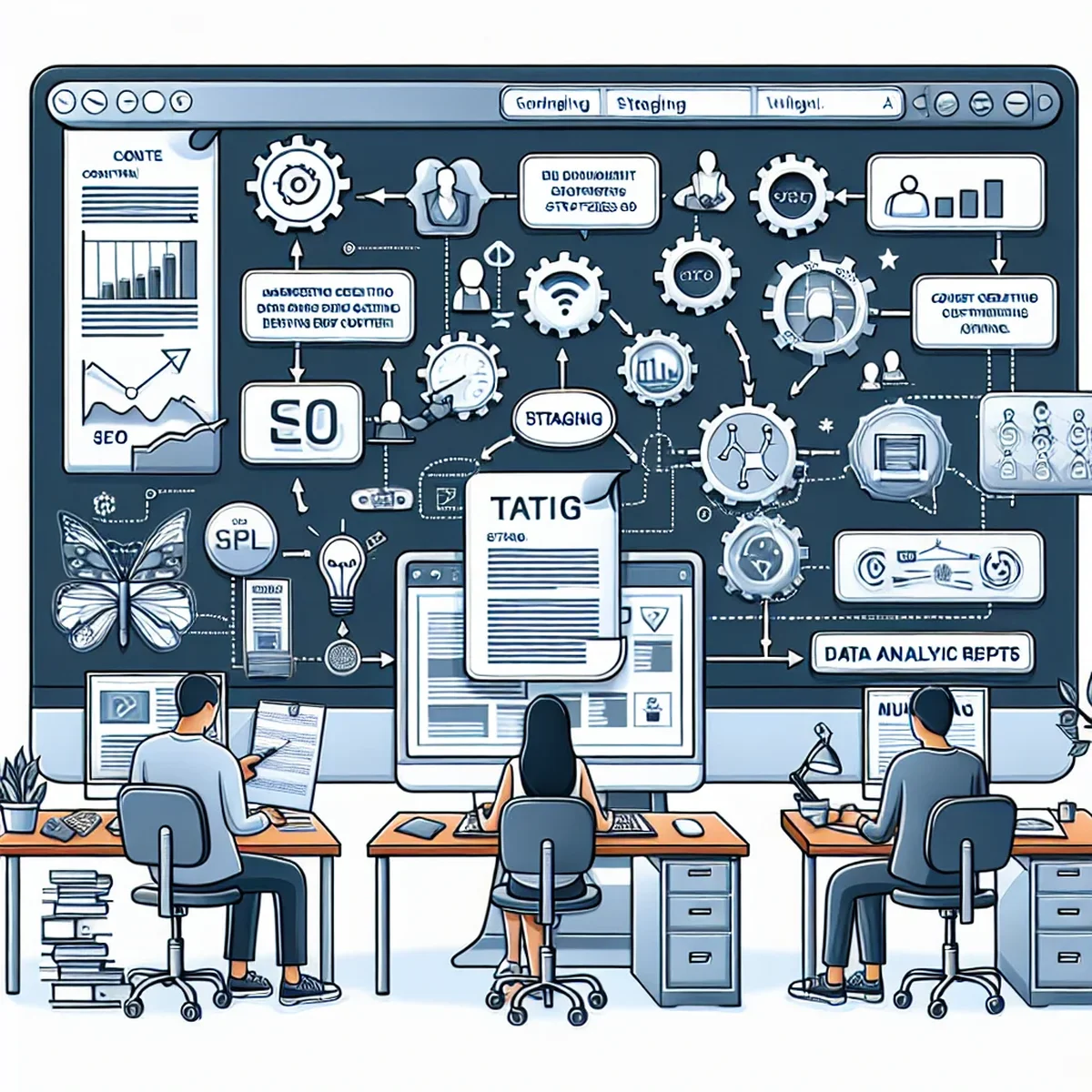Mastering Content Staging Workflows in WordPress for Effective Website Management

When managing a WordPress website, whether it's for a small business or a large marketing agency, ensuring that updates and changes are smoothly implemented is crucial. Content staging is a powerful technique that allows website administrators and developers to test and refine updates before going live. This post will guide you through setting up a content staging workflow, discuss the benefits, and provide practical tips for effective website management.
Understanding Content Staging
Content staging essentially involves creating a replica of your live website, known as the staging site, where all the testing takes place. This setup prevents any potential disruptions on the live site, ensuring that your visitors' experience remains unaffected while you test new features or updates.
Why Content Staging is Essential
- Risk Reduction: Testing updates on a staging site first helps catch errors and compatibility issues, reducing the risk of crashing your live site.
- Quality Assurance: It allows you to conduct thorough testing and QA, ensuring that all elements function correctly.
- Stakeholder Review: Stakeholders can preview changes and provide feedback, leading to better decision-making and user satisfaction.
Setting Up a Content Staging Environment
Creating a staging environment can be done manually or with the help of plugins. Here’s a basic outline to get started:
- Choose a Plugin: Select a content staging plugin that suits your needs. WP Staging and Duplicator are popular choices.
- Create the Staging Site: Use the plugin to clone your live site. This typically involves a few clicks and minimal technical knowledge.
- Implement Changes: Make all desired changes on the staging site, from updating plugins, themes, or custom code adjustments.
- Testing: Conduct comprehensive testing to ensure everything works as expected.
- Push to Live: Once you’re satisfied, use the plugin to push changes from the staging to the live site.
Best Practices for Managing Content Staging Workflows
- Regular Syncing: Regularly sync the staging and live environments to ensure consistency and reduce issues during final deployment.
- Access Control: Limit access to the staging environment to prevent unauthorized changes or leaks of unready features.
- Backup: Always maintain backups of both your live and staging sites to prevent data loss.
Advanced Tips for Efficient Workflow
To further enhance your staging workflow, consider integrating these advanced practices:
- Automated Testing: Implement automated testing scripts to streamline the process of checking new features and updates.
- Version Control: Use version control systems like Git to manage changes and collaborate more effectively with team members.
- Staging Hooks: Utilize hooks for automating processes such as clearing cache or updating database entries after pushing changes live.
Conclusion
Content staging is a critical component of website management that ensures changes are implemented smoothly and professionally. By setting up an efficient content staging workflow, you can enhance site reliability, improve collaboration among team members, and ultimately provide a better product to your end-users.
Embrace these practices to take your WordPress site management to the next level, ensuring that updates are seamless and professionally executed.
FAQ
- What is content staging in WordPress?
- Content staging in WordPress is the process of creating a clone of your live website where you can test updates, themes, plugins, and other changes without affecting the live environment.
- How does content staging benefit digital marketers and business owners?
- Content staging allows for thorough testing and review of website changes, which minimizes disruptions and errors in the live environment, thereby enhancing the site's stability and user experience.
- Are there any recommended plugins for content staging in WordPress?
- Yes, some popular plugins for content staging include WP Staging, BlogVault, and Duplicator. These tools offer various features tailored to different needs, such as ease of use, multisite support, and backup functionalities.